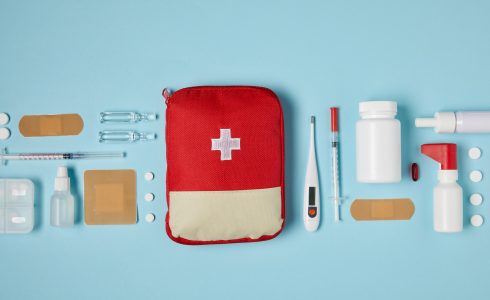
Life can sometimes change in an instant. Thinking about the worst happening is uncomfortable but taking the time to prepare for emergencies before they happen is the smartest thing you can do. Safeguarding your family during an emergency is your main priority. Here’s how you can prepare your family and home for an emergency.
Get informed
You don’t need to prepare for every natural disaster. It’s difficult and overwhelming to try. Instead, find out which natural and man-made hazards may affect your community and the typical safety protocols for them. While earthquakes aren’t common in Polk County, you do want to prepare for cases of hurricanes, tornados, and possibly flooding. Become familiar with how local authorities warn residents of pending emergencies, how they provide information, and emergency procedures and shelters.
You can create a personalized emergency plan for your family once you identified which emergencies you are most likely to face.
Create a family preparedness plan
Creating an emergency plan is essential. Part of the reason why these disasters feel so chaotic is that you’re not quite sure what to do. Where do you go? What do you need to bring? Who is going to pick up the kids? What do we do with the pets? How do we turn off the utilities?
Having an emergency plan gives you peace of mind during an uncertain event. Hold a family meeting and outline what each family member should do during an emergency. Prepare a contact list for family members, an out-of-state emergency contact work, school, and emergency services. Locate safe places in your home for each type of disaster. For hurricanes and tornados, this space is typically an interior closet or hallway away from windows. Also, plan escape routes in case you need to leave suddenly. Designate a meeting space in a location away from the house in case you get separated. Be sure to plan for family members with disabilities and other special needs. Have a designated area for support items so you can quickly find them. You may need to have an alternate evacuation plan and account for alternate power sources for equipment.
Don’t forget to make a plan for your pets! Some public emergency shelters do not allow pets (except for service animals) so it’s important to know where you can safely take your pets.
You should know how and when to turn off water, gas, and electricity. You’ll only want to do this if lines are damaged or directed by officials.
Prepare an emergency kit
Every household should have some emergency supplies on hand. You can store your supplies in airtight plastic bags and put them in one or two easy-to-carry containers or duffel bags. Here are some essential items you should have in your kit:
- Water – plan for one gallon per person, per day (don’t forget to plan for pets)
- Food – at least a three-day supply of non-perishable food
- First aid kit
- a hand-cranked or battery-powered radio
- Flashlights and extra batteries
- Plastic sheeting and duct tape
- Moist towelettes and garbage bags
- A can opener
- Cell phones and chargers
- Prescription medication
- Local maps
- Pet food and supplies
Ready.gov has a complete list of additional items to include your family’s emergency kit.
Practice early and often
There’s a reason why we constantly did fire drills at school. It gets everyone familiar with the family’s emergency procedures and where to find everything they need. Run mock drills for each situation so everyone knows how to get quickly and efficiently get to safety.
The more you know, the more confident you’ll feel. Emergency situations are always stressful and can be difficult to endure. But with some careful planning and communication with your family, you can feel more confident that you’ll be ready to respond.
